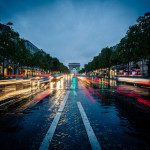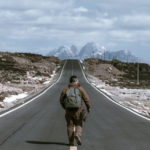Shooting coastal photography can yield some of your most breathtaking shots, but it’s not without its difficulties. Get eight professional tips that will help you capture the wild beauty of the coast in high-quality images. Plus, learn how to scout locations, incorporate fog and clouds, explore post-processing techniques and more when you enroll in professional photographer Kurt Budliger’s online Craftsy class, Photographing Coastal Landscapes.

1. Shoot Early or Late
Coastal photography is beautiful any time of day, but you’ll get the most vivid colors and dramatic lighting right before and after sunrise and sunset. Regardless of your coast, sunsets produce deep blue colors when you are shooting toward the ocean. Conversely, when you shoot into a sunrise or sunset you can get great warm tones in red, orange, and yellow. So, embrace the unpredictable and use these gorgeous tones to your advantage.

2. Get to Know the Wildlife
Much of the American coastline remains surprisingly untamed. Do a little research ahead of time and reap the rewards of understanding what wildlife to look for and when they are most active. You may end up with stunning, active photos of whales, dolphins, seals, pelicans, or even fish.
3. Bracket Your Shots
Challenging lighting and unpredictable conditions make achieving correct exposure especially difficult in coastline photography. To work around these variables, try bracketing your shots so that you get additional frames that are underexposed and overexposed, just in case. You can also blend exposures together for more of an HDR look for terrific detail in both the sea and sky.
4. Play with Scale
Without a reference point, photos of the coast can appear to be a very large or small space. Including a reference point — a person, building or lighthouse — makes it easier for the audience to understand what they’re seeing. You can also obscure the scale. Waves, for example, appear similar whether large or small, which allows you to capture great photos without adding visual reference.
5. Weatherproof Your Equipment
Sand, salt, and water can wreak havoc on your equipment. Do your best to protect your gear by using a filter and hood on your lens, and avoid changing lenses in windy conditions. If possible, consider waterproof housing to protect your camera.
6. Elevate Yourself
Beach views run the risk of looking fairly ordinary, with a lot of sand and sky. Finding a higher vantage point allows you to frame up more of the ocean and highlight striking coastal features.
7. Look for Reflections
Water has great reflective qualities. If the water is still, look for reflections of rocks or birds. If you’re walking along the shoreline, you may find interesting reflections in the thin layer of water moving with the tide.
8. Invest in a Polarizing Filter
Polarizing filters are fun toys for a photographer at the beach. Not only will they help to protect your lens, they also reduce glare and make your blues deeper and more vibrant — a perfect combination for a bright, reflective environment. You get what you pay for, so think carefully about your purchase, and if possible, invest in a nice filter that won’t degrade your image quality.
You’re probably already taking better photos with these helpful tips, but to move your coastal photography to the next level, enroll in the online Craftsy class, Photographing Coastal Landscapes. Professional photographer Kurt Budliger will share his secrets for tracking tides and scouting the perfect shoot location. Then, you’ll learn to take advantage of blue and golden hours, incorporate fog and storm clouds into your atmospheric images, and properly expose your photos by using graduated neutral density filters and polarizers. You’ll even learn advanced post-processing techniques for dynamic, captivating images that are sure to bring clients back for more. The Craftsy platform allows you to watch your HD video lessons anytime, anywhere, with lifetime access to your online class. Plus, Kurt will be there to answer all of your questions and offer helpful advice and feedback on your photos.
What photography techniques do you take with you to the beach?
Like This Article?
Don't Miss The Next One!
Join over 100,000 photographers of all experience levels who receive our free photography tips and articles to stay current:












Awesome photo seascapes!